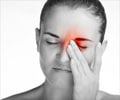A study has shown that people having migraine have greater risk of suffering from severe skin sensitivity or pain after daily routine activities like rubbing one's head, combing one's hair and wearing necklaces or earrings when compared to people who have other types of headache.
Researchers at Albert Einstein College of Medicine in Bronx, NY, surveyed 16,573 people with headache about their type of headache, frequency, quality of life, depression and other illnesses that cause pain.The survey identified 11,737 participants with migraine, 1,491 with probable migraine and 3,345 with another kind of headache.
Researchers found that 68 percent of those who reported almost daily headaches and 63 percent of those with episodic migraines reported allodynia, the name of this intensified and unpleasant, painful skin sensitivity.
They also found that 42 percent of people with probable migraine reported the skin pain as compared to 37 percent of those with daily or tension headache.
"This condition causes discomfort or pain even during everyday activities like touching one's hair or putting on clothes," said study author Marcelo E. Bigal, MD, PhD, with Albert Einstein College of Medicine in Bronx, NY.
"More importantly, this condition may be a risk factor for migraine progression, where individuals have migraines on more days than not. Identifying risk factors for progression is a very important public health priority.
Advertisement
Researchers also found that this type of skin pain was more common in women with migraine and people with migraine who were obese or had depression.
Advertisement
Source-ANI
KAV/L











